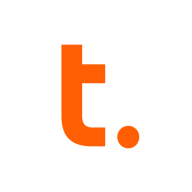

Find out what your peers are saying about Databricks, Amazon Web Services (AWS), Knime and others in Data Science Platforms.
| Product | Market Share (%) |
|---|---|
| Oracle DataScience.com Platform | 0.5% |
| Databricks | 13.9% |
| KNIME Business Hub | 11.9% |
| Other | 73.7% |
| Product | Market Share (%) |
|---|---|
| Teradata | 12.1% |
| Oracle Exadata | 14.2% |
| Snowflake | 12.5% |
| Other | 61.2% |

| Company Size | Count |
|---|---|
| Small Business | 26 |
| Midsize Enterprise | 12 |
| Large Enterprise | 49 |
The DataScience.com Platform makes it easy and intuitive for data science teams to work collaboratively on the data-driven projects that transform how companies do business. Explore and visualize data, share analyses, deploy models into production, and track performance - all from one place.
Teradata is a powerful tool for handling substantial data volumes with its parallel processing architecture, supporting both cloud and on-premise environments efficiently. It offers impressive capabilities for fast query processing, data integration, and real-time reporting, making it suitable for diverse industrial applications.
Known for its robust parallel processing capabilities, Teradata effectively manages large datasets and provides adaptable deployment across cloud and on-premise setups. It enhances performance and scalability with features like advanced query tuning, workload management, and strong security. Users appreciate its ease of use and automation features which support real-time data reporting. The optimizer and intelligent partitioning help improve query speed and efficiency, while multi-temperature data management optimizes data handling.
What are the key features of Teradata?In the finance, retail, and government sectors, Teradata is employed for data warehousing, business intelligence, and analytical processing. It handles vast datasets for activities like customer behavior modeling and enterprise data integration. Supporting efficient reporting and analytics, Teradata enhances data storage and processing, whether deployed on-premise or on cloud platforms.
We monitor all Data Science Platforms reviews to prevent fraudulent reviews and keep review quality high. We do not post reviews by company employees or direct competitors. We validate each review for authenticity via cross-reference with LinkedIn, and personal follow-up with the reviewer when necessary.